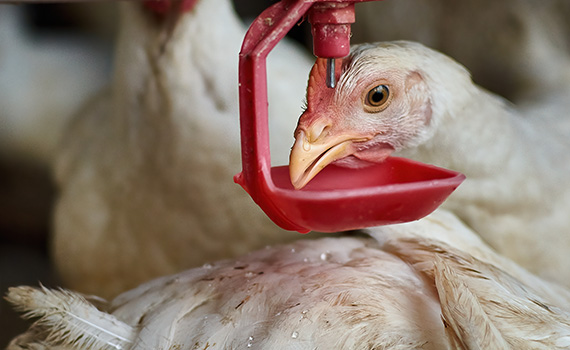Diagnostics key to effective mycoplasma control
Avian mycoplasmosis is a problem for poultry producers worldwide, but according to an expert, there’s no “one-size-fits-all” approach to managing it.
Speaking to Poultry Health Today at the 2019 World Veterinary Poultry Association Congress in Bangkok, Naola Ferguson-Noel, DVM, MAM, PhD — a professor at the University of Georgia — said the most effective interventions and control methods for mycoplasma largely depend on where you are, which segment of the industry you work in and what your goals are.
In the US, for example, she said the focus has been on mycoplasma eradication, with particularly successful results in the broiler breeder industry. However, she acknowledged, elimination is not always a viable strategy in other countries where the prevalence of mycoplasma is much higher.
“With the eradication approach, you need to have a pretty low incidence of disease and what you do is…eliminate anything that is positive, so that it is not a source of infection for the rest of the industry. If you have a very high prevalence, you can’t do that,” Ferguson-Noel explained.
If elimination isn’t an option, vaccines and medication may be used, but it’s important to know which interventions are likely to be most effective, she stressed.
“Vaccines and medications are all slightly different. They’re not all equally safe, and they’re not all equally efficacious. So there has to be some thought in terms of which vaccine to use in which particular situation.”
Make sure your plan is working
According to Ferguson-Noel, the key to an effective mycoplasma-control plan lies in diagnostics.
“Diagnostics are very important to coming up with an effective plan and making sure that your plan is working. And if it’s not, you can make changes,” she said.
“So [if] you’re trying to use one vaccine and you find out that it’s not efficacious enough for your situation…you switch to another vaccine, or you add a second vaccination.”
Mycoplasma diagnostics have been available for decades, Ferguson-Noel said, ranging from the relatively “low-tech” serum plate agglutination test to more sophisticated polymerase chain reaction (PCR) testing. In recent years, real-time and strain-specific PCR tests have enabled the distinction between vaccine strains and field strains, allowing producers to more accurately assess the mycoplasma situations on their farms.
Next-generation diagnostics
Looking at the future of mycoplasma diagnostics, Ferguson-Noel said next-generation sequencing technology — which can rapidly map out the entire genome of mycoplasma and other respiratory pathogens from a tracheal swab — is allowing producers to gather much more data more quickly.
“Because we’re looking at the entire genome, we have much more information than we would have with short pieces of DNA. So we are able to identify key factors that will be important to the veterinarians and the producers — things like whether there is antibiotic resistance,” she said.
“We will be looking for virulence factors, and we’re able to actually come up with actionable data for the practitioners.
“Hopefully, some of these new techniques will give us more information and fast information in terms of what is going on in the flocks — and give the veterinarians and the producers and the farmers more information so that they can better control mycoplasma in the long term.”
Posted on June 20, 2021
 We’re glad you’re enjoying
We’re glad you’re enjoying










